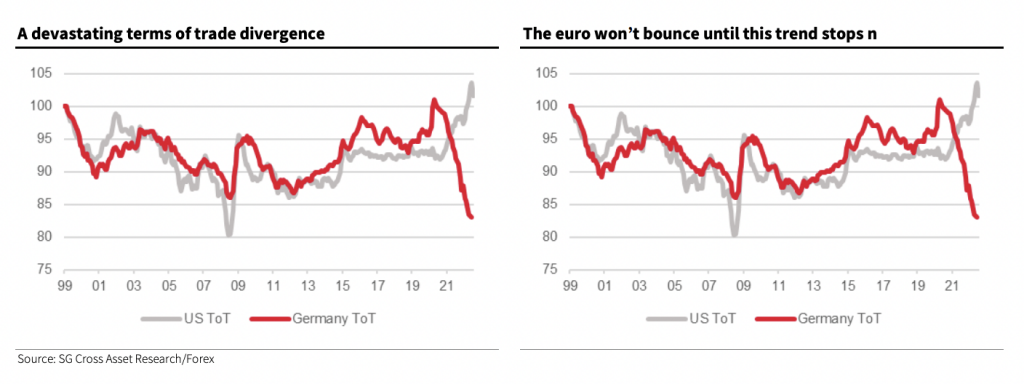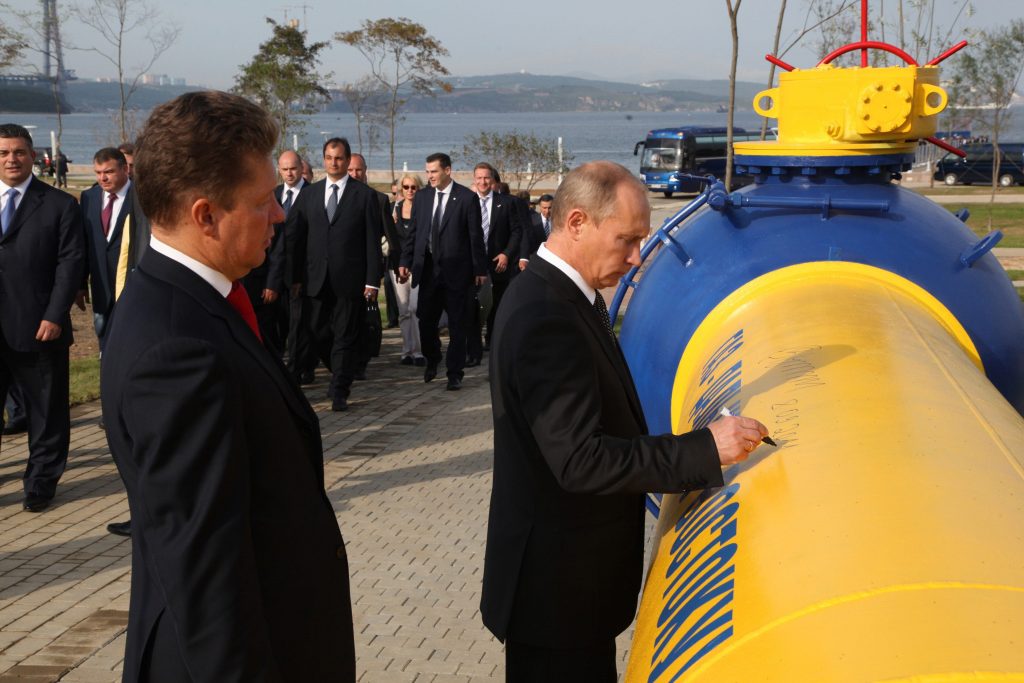- The rise in gas prices in Europe is "crushing" the euro, and it may not rebound against the dollar this year, Societe Generale said Wednesday.
- The euro has been trading below parity against the greenback this week.
- "I can't see a significant rebound for any European currency until we get through the gas crisis," said SocGen strategist Kit Juckes.
The euro is unlikely to recover from multiyear lows against the US dollar until Europe sorts out the natural gas crisis sweeping the region, Societe Generale said Wednesday.
The euro remained below parity against the US dollar on Wednesday, trading around $0.9968. The shared currency has slumped more than 12% versus the greenback this year, leaving it at lows not seen in two decades.
What's contributed to the dollar's surge is rising energy prices in the US, a top energy producer, while Europe's position as a gas importer has been "crushing" the euro, Kit Juckes, chief FX strategist at Societe Generale, said in a note Wednesday.
"As long as the energy crisis lasts, the euro will be anchored," he said. "I can't see a significant rebound for any European currency, until we get through the gas crisis.
Natural gas prices have spiraled higher for the European Union this year. Russia has sharply cut down flows to the region after Moscow was hit with sanctions after Russian President Vladimir Putin ordered the invasion of Ukraine six months ago.
Soaring natural gas prices have propelled electricity prices to record highs, stoking widespread expectations that the pressure put on households and businesses will push the EU economy into recession.
"Our current forecasts look for EUR/USD to trough in Q3, in a 0.95-1.0 range, and while that level may be about right, it's harder now, to see a bounce before the end of the year," said Juckes.
The strategist also pointed to an earlier period of high energy prices to draw a contrast. When oil prices rose in the run-up to the 2008 global financial crisis, both European and US terms of trade suffered, said Juckes, referring to the ratio between a country's exports prices and its import prices.
However, "this time around, the relative effect is completely different," he said. For the euro, "it just highlights the scale of the challenge confronting the continent."
In fact, the terms of trade divergence between the US and Germany, Europe's largest economy, is so dramatic "that it is currently more important than what the Fed or ECB are doing when it comes to the outlook for EUR/USD," he said.
The European Central Bank may increase its benchmark interest rate by 50 basis points at its September meeting as it combats high inflation. In June, it increased its key interest rate by 50 points, the first hike in 11 years. The Federal Reserve is widely expected to raise the fed funds rate by either 50 basis points or 75 basis points. The key US rate has been raised four times already in 2022, to a range of 2.25% to 2.75%.


